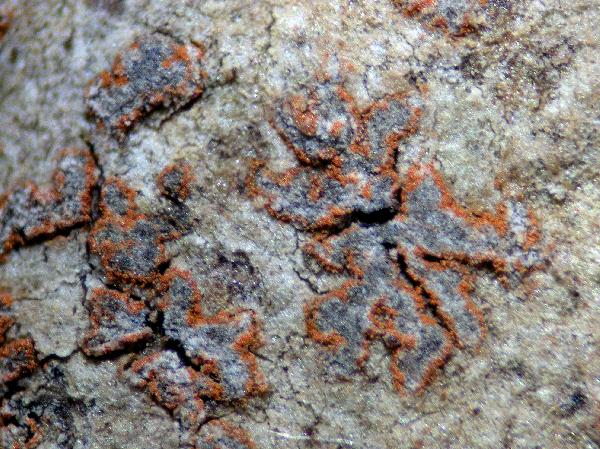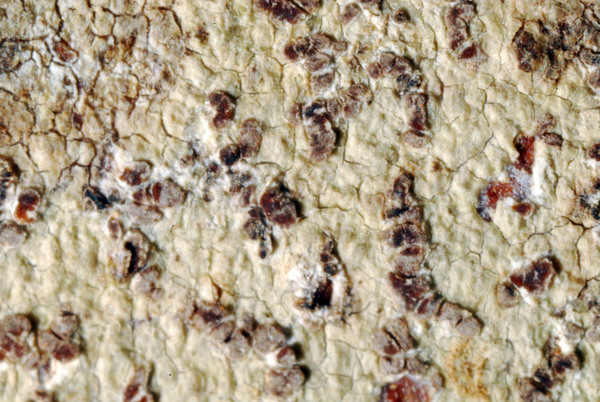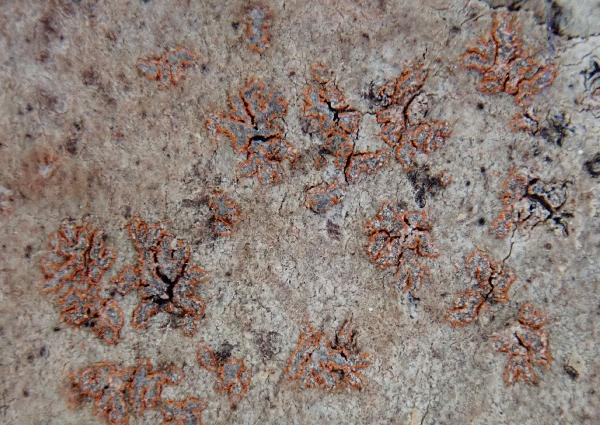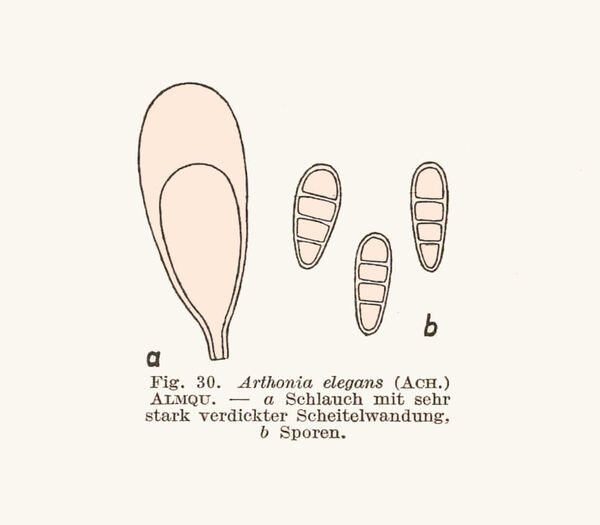Coniocarpon fallax (Ach.) Grube
in Frisch & al., Taxon 63, 4: 737, 2014.. Basionym: Spiloma fallax Ach. - Meth. Lich.: 10, 1803.
Synonyms: Arthonia elegans (Ach.) Almq.; Coniocarpon elegans (Ach.) Duby; Spiloma elegans Ach.
Distribution: N - Ven (Nascimbene & Marini 2010), Lomb (Sundin & Tehler 1998, Ravera & al. 2023), Piem, Lig (Jatta 1909-1911). C - Tosc, Laz, Abr. S - Camp (Puntillo & al. 2000), Cal (Puntillo 1996, Puntillo & Puntillo 2004, 2012).
Description: Thallus crustose, endosubstratic or thinly episubstratic, sometimes evanescent, dirty orange, ochraceous or whitish, sometimes delimited by an orange-violet prothallus. Apothecia arthonioid, very variable in shape, from ellipsoid to weakly lirelliform, often confluent into stellate groups, 0.2-0.6 x 0.1-0.2 mm, with a reddish brown to brown-black, sometimes thinly white-pruinose disc, the marginal areas with a crimson-red pruina. Proper exciple poorly developed, brown, 7–20 μm wide, of 1-2 μm thick, paraphysoid-like, vertically arranged hyphae often forming up to 17 μm long hairs at the outer margin, amyloid, with orange, red and purple crystals soluble in K; epithecium yellowish brown, 10-20 μm high, with orange, red and purple crystals soluble in K and K+ purple, composed of the branched tips of paraphysoids extending horizontally above the asci, I+ blue; hymenium colourless to yellowish red, 30-75 μm high, K-, hemiamyloid, I+ red, K/I+ blue; paraphysoids 1-2 μm thick, conglutinated only in lower parts, the branched tips 3(-4) μm wide, free, extending horizontally above the asci; hypothecium poorly developed, 10-25 µm high, colourless to pale yellowish brown, amyloid. Asci 8-spored, broadly clavate to subglobose, semi-fissitunicate, with a large apical dome and a distinct ocular chamber, with a hemiamyloid ring in the tholus, approaching the Arthonia-type. Ascospores (1-)3-4(-5)-septate, hyaline turning pale brown-when overmature, oblong-ovoid, with a larger cell at one apex, (12-)15-18(-22) x (4-)5-9(-10) μm. Photobiont trentepohlioid. Spot tests: thallus K-, C-, KC-, P-. Chemistry: thallus without lichen substances; apothecia with different quinoid pigments. Note: a mild-temperate lichen found on smooth bark, e.g. of Corylus, in humid woodlands, such as along rivers, often with Pseudoschismatomma rufescens. The Italian material needs revision: some Italian records may prove to belong to Coniocarpon cuspidans (see e.g. Cannon & al. 2020). It is included in the Italian red list of epiphytic lichens as “Vulnerable” (Nascimbene & al. 2013c).
Growth form: Crustose
Substrata: bark
Photobiont: Trentepohlia
Reproductive strategy: mainly sexual
Most common in areas with a humid-warm climate (e.g. most of Tyrrenian Italy)
Commonnes-rarity: (info)
Alpine belt: absent
Subalpine belt: absent
Oromediterranean belt: absent
Montane belt: extremely rare
Submediterranean belt: extremely rare
Padanian area: absent
Humid submediterranean belt: very rare
Humid mediterranean belt: extremely rare
Dry mediterranean belt: absent
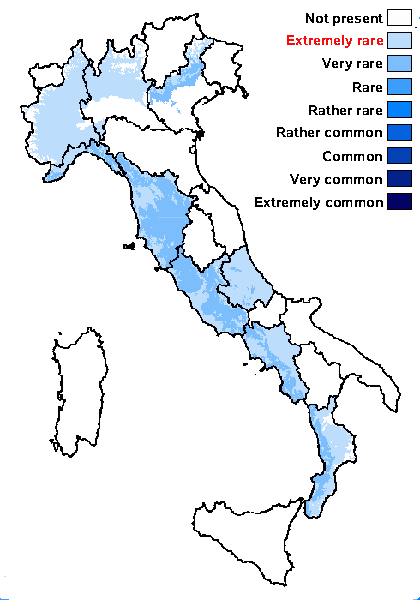
Predictive model
Herbarium samples
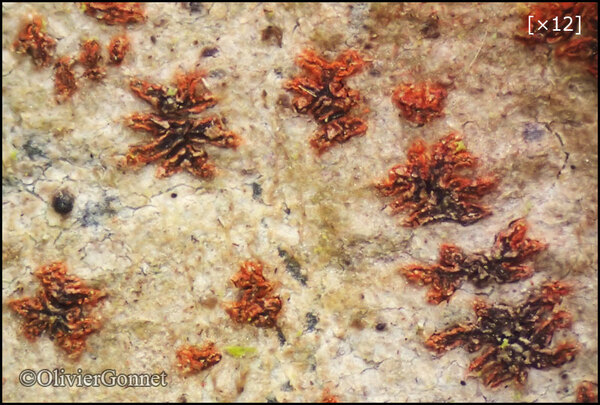
Courtesy Danièle et Olivier Gonnet - Source: https://www.afl-lichenologie.fr/Photos_AFL/Photos_AFL_C/Textes_C6/Coniocarpon_fallax.htm
France, sur Fraxinus - Cortambert, alt. 225 m - Saône-et-Loire
19/09/2017
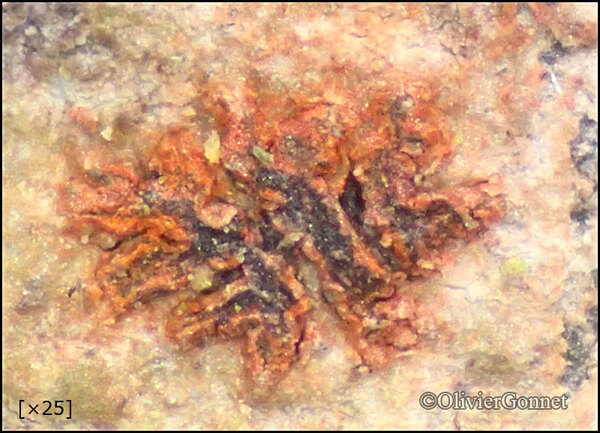
Courtesy Danièle et Olivier Gonnet - Source: https://www.afl-lichenologie.fr/Photos_AFL/Photos_AFL_C/Textes_C6/Coniocarpon_fallax.htm
France, sur Fraxinus - Cortambert, alt. 225 m - Saône-et-Loire
19/09/2017
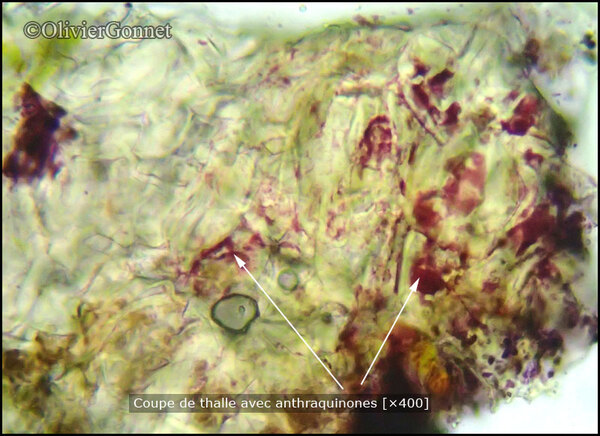
Courtesy Danièle et Olivier Gonnet - Source: https://www.afl-lichenologie.fr/Photos_AFL/Photos_AFL_C/Textes_C6/Coniocarpon_fallax.htm
France, sur Fraxinus - Cortambert, alt. 225 m - Saône-et-Loire
19/09/2017

Courtesy Danièle et Olivier Gonnet - Source: https://www.afl-lichenologie.fr/Photos_AFL/Photos_AFL_C/Textes_C6/Coniocarpon_fallax.htm
France, sur Fraxinus - Cortambert, alt. 225 m - Saône-et-Loire
19/09/2017
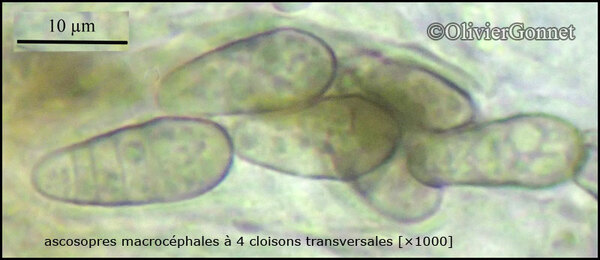
Courtesy Danièle et Olivier Gonnet - Source: https://www.afl-lichenologie.fr/Photos_AFL/Photos_AFL_C/Textes_C6/Coniocarpon_fallax.htm
France, sur Fraxinus - Cortambert, alt. 225 m - Saône-et-Loire
19/09/2017

Bernard Bouffinier - Source: http://www.lichensmaritimes.org/index.php?task=fiche&lichen=758&lang=en
France, Crozon

Bernard Bouffinier - Source: http://www.lichensmaritimes.org/index.php?task=fiche&lichen=758&lang=en
France, Crozon
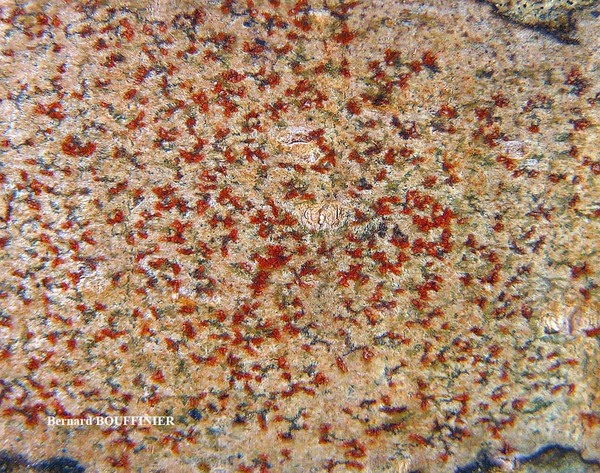
Bernard Bouffinier - Source: http://www.lichensmaritimes.org/index.php?task=fiche&lichen=758&lang=en
France, Crozon
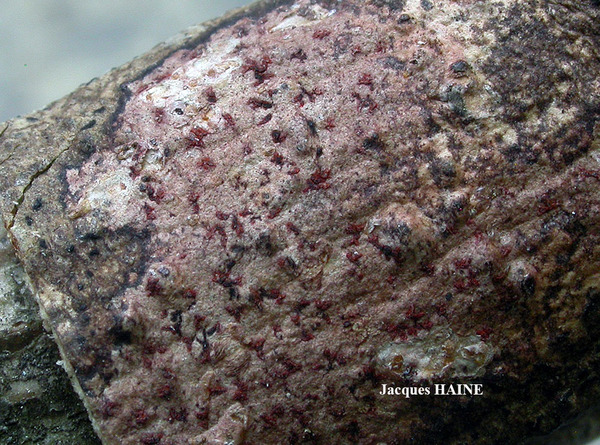
Jacques Haine - Source: http://www.lichensmaritimes.org/index.php?task=fiche&lichen=758&lang=en
France, Ardennes

Jacques Haine - Source: http://www.lichensmaritimes.org/index.php?task=fiche&lichen=758&lang=en
France, Ardennes
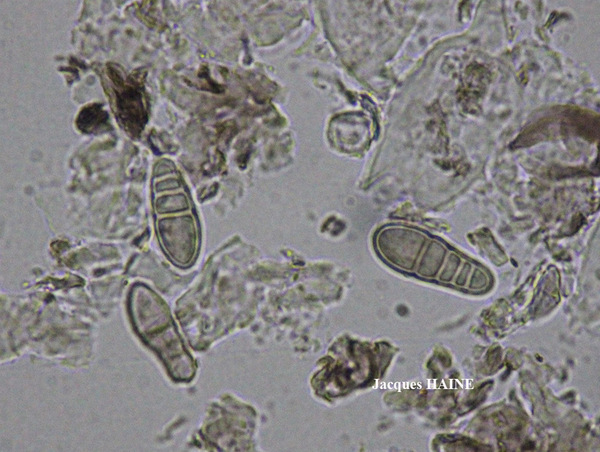
Jacques Haine - Source: http://www.lichensmaritimes.org/index.php?task=fiche&lichen=758&lang=en
France, Ardennes

CC BY-4.0 - Source:Frisch A, Moen VS, Grube M, Bendiksby M (2020) Integrative taxonomy confirms three species of Coniocarpon (Arthoniaceae) in Norway. MycoKeys 62: 27-51. https://doi.org/10.3897/mycokeys.62.48480
Coniocarpon fallax (Frisch TRH-L-29028). Scale bar: 1 mm

CC BY-4.0 - Source:Frisch A, Moen VS, Grube M, Bendiksby M (2020) Integrative taxonomy confirms three species of Coniocarpon (Arthoniaceae) in Norway. MycoKeys 62: 27-51. https://doi.org/10.3897/mycokeys.62.48480
Coniocarpon fallax (TRH-L-16793). Scale bar: 1 mm
Growth form: Crustose
Substrata: bark
Photobiont: Trentepohlia
Reproductive strategy: mainly sexual
Most common in areas with a humid-warm climate (e.g. most of Tyrrenian Italy)
Commonnes-rarity: (info)
Alpine belt: absent
Subalpine belt: absent
Oromediterranean belt: absent
Montane belt: extremely rare
Submediterranean belt: extremely rare
Padanian area: absent
Humid submediterranean belt: very rare
Humid mediterranean belt: extremely rare
Dry mediterranean belt: absent

Predictive model
| Herbarium samples |

Courtesy Danièle et Olivier Gonnet - Source: https://www.afl-lichenologie.fr/Photos_AFL/Photos_AFL_C/Textes_C6/Coniocarpon_fallax.htm
France, sur Fraxinus - Cortambert, alt. 225 m - Saône-et-Loire
19/09/2017

Courtesy Danièle et Olivier Gonnet - Source: https://www.afl-lichenologie.fr/Photos_AFL/Photos_AFL_C/Textes_C6/Coniocarpon_fallax.htm
France, sur Fraxinus - Cortambert, alt. 225 m - Saône-et-Loire
19/09/2017

Courtesy Danièle et Olivier Gonnet - Source: https://www.afl-lichenologie.fr/Photos_AFL/Photos_AFL_C/Textes_C6/Coniocarpon_fallax.htm
France, sur Fraxinus - Cortambert, alt. 225 m - Saône-et-Loire
19/09/2017

Courtesy Danièle et Olivier Gonnet - Source: https://www.afl-lichenologie.fr/Photos_AFL/Photos_AFL_C/Textes_C6/Coniocarpon_fallax.htm
France, sur Fraxinus - Cortambert, alt. 225 m - Saône-et-Loire
19/09/2017

Courtesy Danièle et Olivier Gonnet - Source: https://www.afl-lichenologie.fr/Photos_AFL/Photos_AFL_C/Textes_C6/Coniocarpon_fallax.htm
France, sur Fraxinus - Cortambert, alt. 225 m - Saône-et-Loire
19/09/2017

Bernard Bouffinier - Source: http://www.lichensmaritimes.org/index.php?task=fiche&lichen=758&lang=en
France, Crozon

Bernard Bouffinier - Source: http://www.lichensmaritimes.org/index.php?task=fiche&lichen=758&lang=en
France, Crozon

Bernard Bouffinier - Source: http://www.lichensmaritimes.org/index.php?task=fiche&lichen=758&lang=en
France, Crozon

Jacques Haine - Source: http://www.lichensmaritimes.org/index.php?task=fiche&lichen=758&lang=en
France, Ardennes

Jacques Haine - Source: http://www.lichensmaritimes.org/index.php?task=fiche&lichen=758&lang=en
France, Ardennes

Jacques Haine - Source: http://www.lichensmaritimes.org/index.php?task=fiche&lichen=758&lang=en
France, Ardennes

CC BY-4.0 - Source:Frisch A, Moen VS, Grube M, Bendiksby M (2020) Integrative taxonomy confirms three species of Coniocarpon (Arthoniaceae) in Norway. MycoKeys 62: 27-51. https://doi.org/10.3897/mycokeys.62.48480
Coniocarpon fallax (Frisch TRH-L-29028). Scale bar: 1 mm

 INDEX FUNGORUM
INDEX FUNGORUM
 GBIF
GBIF
 DOLICHENS
DOLICHENS

